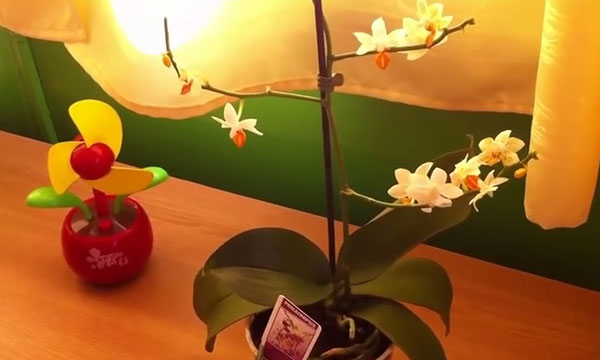When you know what to plant next to this or...
Phalaenopsis orchids fungus
Phalaenopsis orchids fungus may vary from solely cosmetic to potentially fatal. Fungus can strike even hardy species. Luckily, prompt and correct treating makes it possible to control fungal infections.
Fusarium, Rhizoctonia, Pythium and Phytophthora are the most common fungal diseases. Fusarium wilt generally occurs if nonsterile tools or working surfaces have been used. It can also infect the plant if the root collar of the species has been wet for a long time. This fungus is characterized by little yellow-brown spots on the roots. The youngest leaves turn red and eventually start falling off. Older foliage becomes coriaceous and gradually dries out. The disease develops slowly and in the early stage it may even remain unnoticed.
Rhizoctonia is originally a root disease. Symptoms can be found on aerial parts of the species. The foliage and pseudobulbs turn yellow and thin. They become shriveled and twisted. The infestation is highly contagious and the measures should be taken immediately to rescue the plant.
Pythium and Phytophthora start on the leaves, roots or new leads. You will notice small, watery brown spots on the underside of the foliage. Soon these spots will become purplish brown or purplish black with a yellowish margin. They enlarge with age. If not treated rapidly, these types of phalaenopsis orchids fungus can kill the plant.
So the facts mentioned above imply that treatment measures should be taken as soon as possible. The infected species should be isolated from other plants, the infected areas must be removed. Relocate the plant so that the air circulation was better, humidity lower and the temperatures were about 65-80 degrees Fahrenheit. Spray the plant with the broad-spectrum fungicide.











